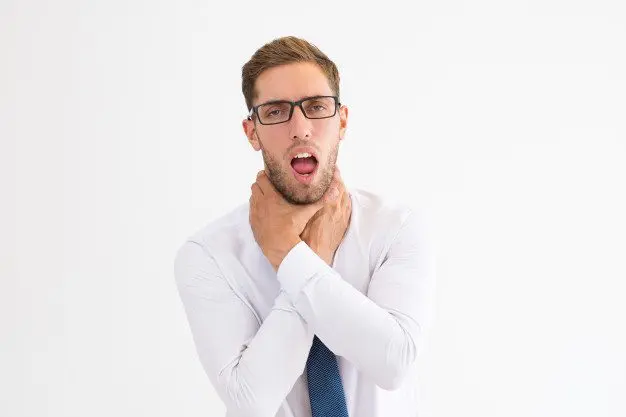Contents
Suffocation: gestures that save
Choking occurs when the airways are blocked. The main causes of obstruction are:
– Foods – Objects – Tongue in unconscious victims) – Blood (head injuries) – Vomiting – Allergies – Dentures
There are two kinds of obstructions:
– Complete: air cannot circulate at all. – Partial: air circulates, but in very small quantities.
The cough is the best indicator of whether the air is still circulating: if the victim can cough, the obstruction is not complete. It is important to always encourage the victim to cough in order to try to bring out the cause of the obstruction at the same time.
Signs of choking
If the obstruction is complete:
The victim is unable to speak or cry; It does not make any sound of breathing; She has red skin; She has blue lips and gums; She has a panicked look; She puts her hands to her throat: it is the universal sign of suffocation.
If the obstruction is partial:
The victim may cough, talk a little or cry; She is panicked and she puts her hands to her throat; She has red skin.
How to react ?
For a conscious adult or child:
Communication and calm are essential: introduce yourself quickly to the victim, reassure her and encourage her to cough;
Your intervention is only necessary if the victim is no longer able to cough;
See if the victim has any visible object in their throat. If the object is visible, remove it by forming a hook with your pinky finger and dragging the object;
Wrap your arm around the victim at chest level. Lean her forward towards the ground. Give him quick slaps on the back, up (towards the back of the neck) between the shoulder blades. If the method doesn’t work, try the abdominal push;
Abdominal thrusts:
- Stand behind the victim, wrap your arms around them and place one leg between their legs (so that if they fall unconscious your knee can hold them back to avoid potential injury from the fall);
- With your index fingers, find the pelvic bones on either side of the belly. Join the thumbs together (approximately above the victim’s navel);
- Where your thumbs meet, surround your right thumb with the rest of your fingers of the same hand (so that the thumb presses the victim’s stomach) and place your left hand on your right hand;
- The thrusts should be fast, strong and directed upwards in the victim’s stomach. Each push must be distinct;
- Continue pushing until the airways are clear;
- Abdominal thrusts can cause internal injuries. If the object comes out, pick it up with gloves, put it in a plastic bag, and advise the victim to go to the hospital with the piece for a full examination.
Chest thrusts:
If the victim is pregnant or obese, abdominal thrusts are impossible. It is then necessary to do chest thrusts.
- Position yourself in the same way as for abdominal thrusts;
- Place your hands on the victim’s breastbone (in the center of the chest). The position of your hands should be the same as for abdominal thrusts;
- Give sharp, powerful blows towards you (horizontally and not upwards).
Unobstructed airways in babies
Look in its mouth to see if the object is there; Place the baby on his stomach, on your left arm (supporting his head in your left hand: be careful not to block his mouth); Give him 5 slaps on the back (pushing upwards); Turn it on its back, on your right arm; Give her 5 two-finger chest thrusts; Continue until his airways clear or he falls unconscious.
Airway clearance in an adult or unconscious child
Call for help; Give 30 compressions in the center of the chest; Open the victim’s mouth to check for the presence of a foreign object. Take it off if you see it.
Give a breath:
If the air passes: give a second;
If the air does not pass: lower the chin before raising it to open the airways. Try again.
Give 30 compressions;
Repeat steps 3 to 5 until the piece comes out, there is a change in the victim’s state of consciousness, or help arrives.
To check if the air passes well during breaths, see if the victim’s chest or stomach swells when you breathe. Make sure you place the pocket mask correctly. This protective barrier is fitted with a valve that allows the aid to breathe air into the victim’s mouth without direct contact, while preventing the exhaled air from returning to the aid. |
Airway clearance for an unconscious baby
Call for help; Give 30 compressions (same as CPR or CPR); Open the baby’s mouth to check for a foreign object. Remove it if you can see it (see above); Give a (light) insufflation.
- If the air passes: give a second;
- If the air does not pass: lower the chin before raising it to open the airways. Try again.
Give 30 compressions;
Repeat steps 3 to 5 until the piece comes out, there is a change in the victim’s state of consciousness, or help arrives.










